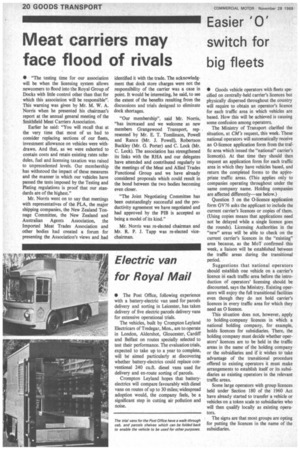Easier '0' switch for big fleets
Page 22

If you've noticed an error in this article please click here to report it so we can fix it.
• Goods vehicle operators with fleets specified on centrally-held carrier's licences but physically dispersed throughout the country will require to obtain an operator's licence for each traffic area in which vehicles are based. How this will be achieved is causing some confusion among operators.
The Ministry of Transport clarified the situation, at CM'S request, this week. These national operators will automatically receive an 0-licence application form from the traffic area which issued the "national" carrier's licence(s). At that time they should then request an application form for each traffic area in which they have vehicles based, and return the completed forms to the appropriate traffic areas. (This applies only to companies operating throughout under the same company name. Holding companies are affected differently—see below.) Question 5 on the 0-licence application form GV76 asks the applicant to include the current carrier's licences or copies of them. (Using copies means that applications need not be delayed while a single licence goes the rounds). Licensing Authorities in the "new" areas will be able to check on the current carrier's licences in the "existing" area because, as the MoT confirmed this week, a liaison will be established between the traffic areas during the transitional period.
Suggestions that national operators should establish one vehicle on a carrier's licence id each traffic area before the introduction of operators' licensing should be discounted, says the Ministry. Existing operators will enjoy the full transitional facilities even though they do not hold carrier's licences in every traffic area for which they need an 0 licence.
This situation does not, however, apply to holding-company licences in which a national holding company, for example, holds licences for subsidiaries. There, the holding company must decide whether operators' licences are to be held in the traffic areas in the name of the holding company or the subsidiaries and if it wishes to take advantage of the transitional procedure offered to existing operators it must make arrangements to establish itself or its subsidiaries as existing operators in the relevant traffic areas.
Some large operators with group licences held under Section 180 of the 1960 Act have already started to transfer a vehicle or vehicles on a token scale to subsidiaries who will then qualify locally as existing operators.
The signs are that most groups are opting for putting the licences in the name of the subsidiaries.
















































































































